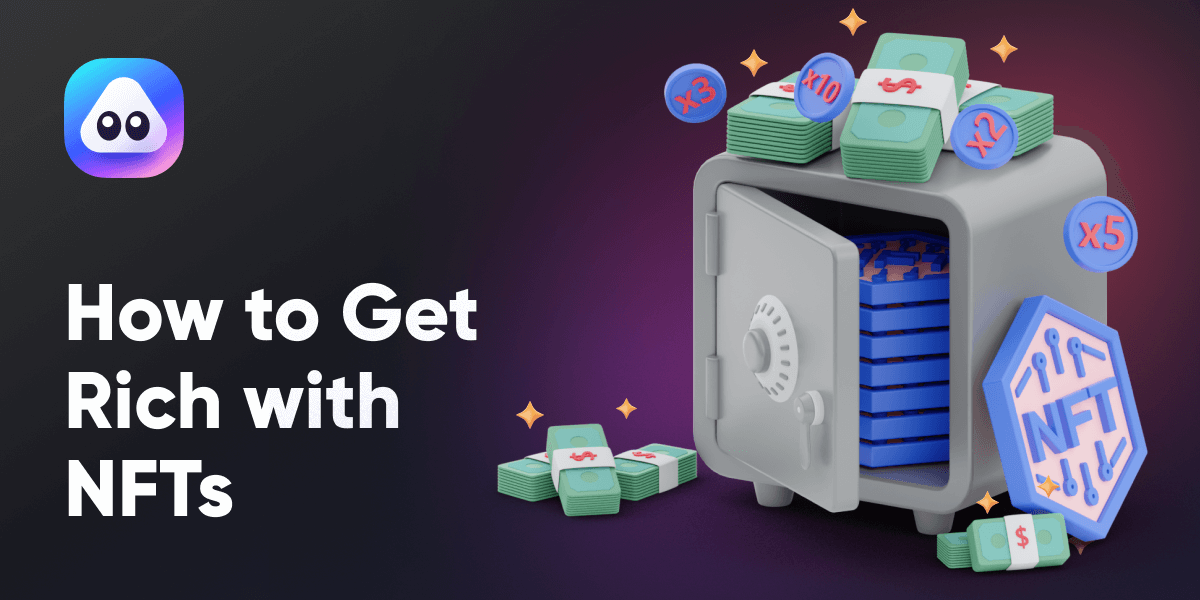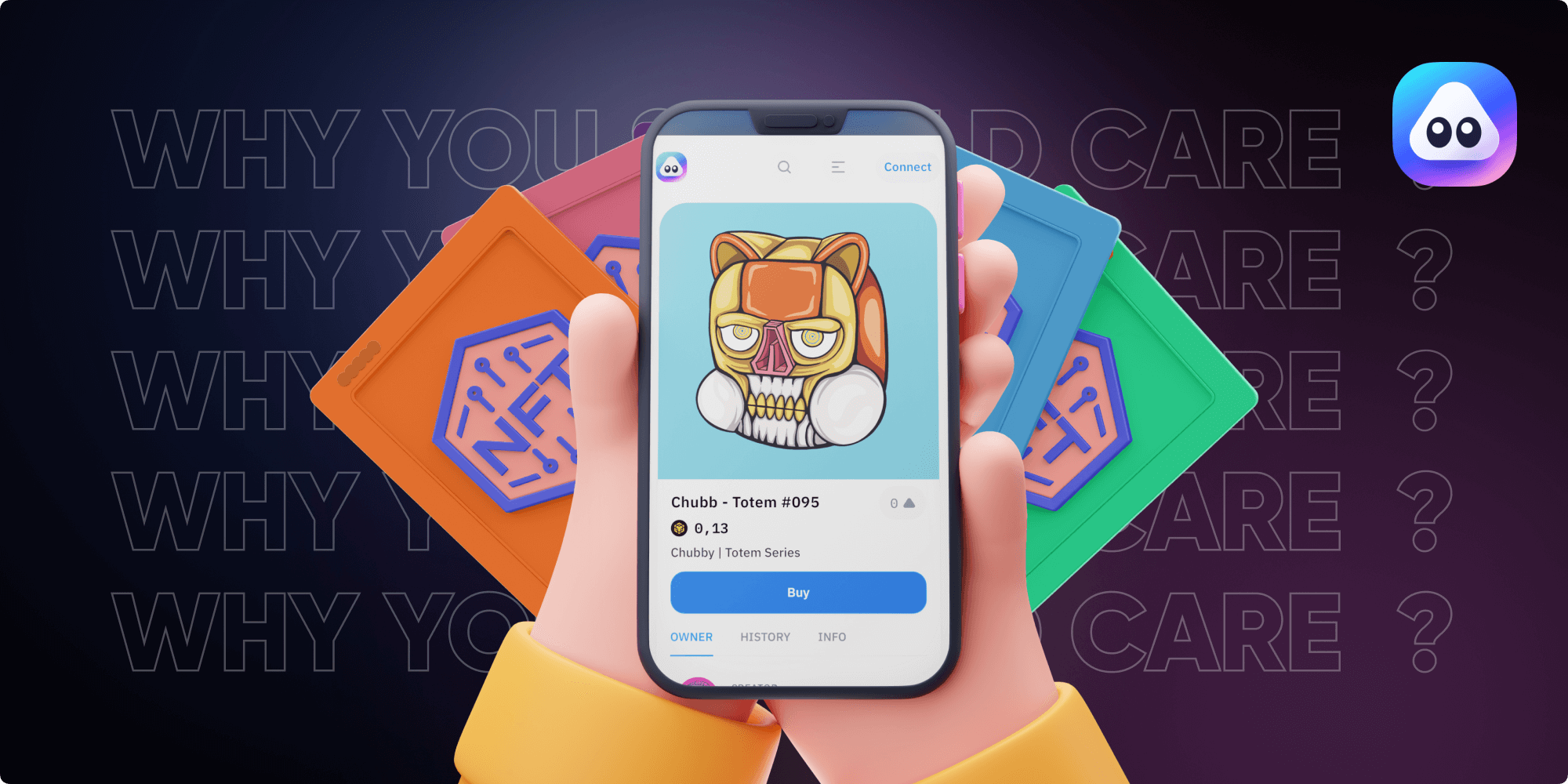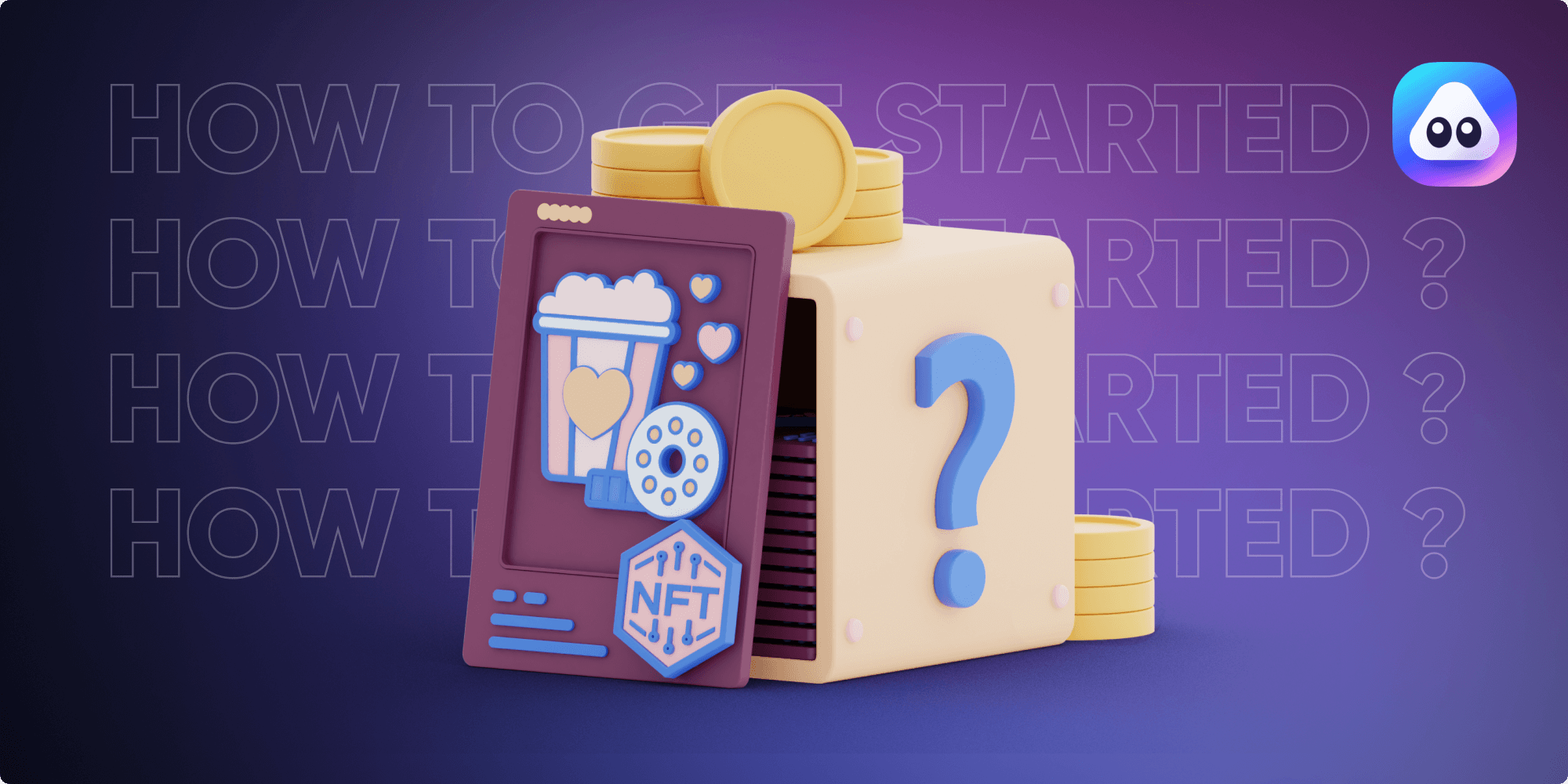How to get rich with NFTs
Trading NFTs and earning BSC, FTM and MATIC via NFTs is getting more and more profitable.
April 11, 2022

In recent months, the focus on non-fungible tokens (NFTs) has been on the amount of money invested in the sector. While this is certainly the case for many NFT collectors, who explore various NFT marketplaces to find NFT projects that excite them and expect a significant return on investment (ROI), for many, the pleasure of collecting NFTs has much more to do with the emotional value and connection to the artwork itself. If this is the first time you've heard of NFTs, you should probably check out our previous article to learn what NFTs are.
Why you should care about NFTs

So far, all indications are that NFTs are the trend that will last. They offer a range of benefits for both the buyer and the seller. Let's look at four of them:
- Before NFTs, it was difficult to verify that digital artworks were original because anyone could take a screenshot of the work. But with the implementation of NFTs, digital artists have a clearer path to sell directly to buyers and be easily compensated.
- The buyer of an NFT is in possession of the original work, but with the added value of built-in verification of ownership. An NFT can offer the opportunity to own a rare digital asset or represent an investment that can be resold on an NFT marketplace at a profit. NFTs are a sustainable way to create verifiable relationships between artists and collectors. They allow individuals to form a unique bond that can be traced through their artwork.
- NFT collectors are digital natives and futurists who are drawn to integrity and originality. NFT artists can really express their craziest ideas and find people who recognize them within the industry.
- NFTs are also a way to financially support the NFT artists you admire. As an artist, you can monetize your digital work for whatever price you think it is worth, and an NFT collector may think it is worth more and bid above the asking price.
How to get started with NFTs?

1. Creating and selling
First, do you want to create NFTs or become a collector? If it's the former, find something worth minting NFTs on, or better yet, find an interesting and potential use case. Some of the most popular NFTs use cases include digital art, gaming, fashion, and music. There is value and opportunity to be found in all of these use cases.
Once you have a valuable digital asset to sell, it's time to create your NFTs. Start by choosing one of the many NFT marketplaces available, such as AirNFTs, where you can mint your NFTs on Binance Smart Chain (BSC), Fantom (FTM) or Polygon (MATIC) for less than a dollar.
2. Investing in NFTs
If you're into digital art, NFTs are a great way to invest in unique artwork. Look for artists who have defined a certain style and trajectory. If the artist is committed to his or her work and has an ongoing artistic NFT project, the work you buy is more likely to increase in value later on. Similarly, if you are an NFT collector of a certain style, you may decide to ignore the price at some point. In short, choose something you like and are willing to keep for a long time.
3. Make passive income with utility NFT projects
These can come in many forms. It can be a collection of similar NFT artworks or an NFT game that grows with new creations. Every time a utility NFT project is sold on a secondary NFT marketplace, royalties could be distributed in the form of special coins to all NFT holders of that utility. Be sure to research the NFT artist or NFT marketplace, creating an NFT art. If it turns out that they have a strong track record of creating unique and valuable NFT works, have a history of continuing to create NFTs in the future, and have an engaged fan base on social media, it is more likely to be worth the investment.
4. Flipping a purchased NFT for profit
Since NFT markets can go down or up at any time, if the value of the NFTs you bought goes up after you buy them, you may be able to sell them for a profit. Check our previous article to get more insights on How to Flip an NFT for Profit.
How to pick NFTs that make you money?

There are a number of projects that offer users the opportunity to purchase NFTs, but not all of them are worth it. In fact, the vast majority of them are not good investments. In many cases, most NFT projects follow a path where the launch is heavily hyped and most users rush to buy NFTs. Then the hype fades, prices drop, and trading volumes are much lower for a period of time. After a while, some projects will sustain themselves through game development and community building, while most will quietly disappear.
1. Trading volume
A good starting point is to look at which NFT projects have the highest trading volume using NFT marketplaces such as AirNFTs, Opensea or Rarible. This gives you a good idea of the hottest and trendiest projects worth looking at, but be aware that volume can drop off very quickly when the hype dies down.
2. Activity trend
Once you have an NFT project to evaluate, one factor to check is the evolution of the activity over time. Are the number of users and transaction volume increasing or decreasing? If you are considering a short-term transaction, you should only look at projects that are increasing.
3. Community
It is also important to get a sense of how active and engaged the project's community members are. Follow the project's Twitter handle, join the Discord as well as Telegram channels for more information. Are there many people discussing the project? Are they playing (and enjoying) the game, or are they sitting on the sidelines? These are subjective and relative factors, so it will be easier to assess them after reviewing various NFT projects.
4. Project Stage
Is this a new project, or one that has existed for some time? If a project is new and there is not yet a game or other mechanism to give NFTs a utility, it will be much harder for it to maintain a community. Buying NFTs at a pre-sale or earlier in general is much riskier than buying a project that has already built something and gathered a dedicated community.
What to check before buying NFTs?

1. The uniqueness of the NFT
NFT collections consist of individual avatar NFT artworks, which are all unique in their own way. Sometimes the greater the uniqueness, the higher the value, but sometimes this is not the case. Sometimes the simplest avatars have more value, like the basic Bored Ape NFT.
Checking the uniqueness of an NFT is also a great way to confirm that it is legitimate. Many scammer accounts upload copies of popular NFTs, but cannot replicate their properties.
If you want to increase your chances of buying an NFT with a promising value trajectory, check the rarity of the properties of your chosen NFT.
2. The NFT seller verification badge
Official sellers on NFT marketplaces like AirNFTs will have a blue verification check mark next to their account name to prove that they are trustworthy and not scam accounts. So, if you are looking to buy from a known seller, such as rizkiahmads or yobaninja, make sure the account has a verification checkmark.
However, this verification check mark cannot always be used to verify the legitimacy of the seller. Many legitimate NFT sellers do not yet have their verification check mark on certain NFT marketplaces, just like some influencers on social media who are not yet verified. So check the NFT properties as a backup if you want to buy from an unverified account.
3. The NFT marketplace transaction/gas fees
When you swap cryptocurrencies, buy an NFT or perform a similar action on an NFT marketplace, you often have to pay a transaction/gas fee, but these may vary depending on the platform. Some platforms charge fees on both sides of the transaction. As an NFT collector, it is best to know the existing fees on the NFT marketplace of your choice before making any purchases.
4. NFT Liquidity and Market Volume
NFTs do not have the same liquidity as cryptocurrencies, which is extremely important to keep in mind. It is very difficult to liquidate an NFT in traditional currency, compared to how you can with cryptocurrency. This can be an obstacle for those who invest in NFTs to make a profit.
In addition to liquidity, it is also important to consider the market volume of the NFT industry. As with many businesses or industries that seem to explode overnight, the peak can be short-lived. So it's important to keep that in mind if you want to buy an NFT as a longer-term investment, rather than a piece of art to own or sell in a few months.
Closing thoughts
Buying and selling NFTs can certainly make you a lot of money, but there are countless mistakes you can make in your purchasing decisions if you are not well-informed. Cybercriminals are currently profiting greatly from the NFT industry, and some NFTs are simply not worth buying. Nonetheless, the rush for owning NFTs is growing every day, with more and more people and organizations choosing to be part of the industry.
Start making money with NFTs now!
